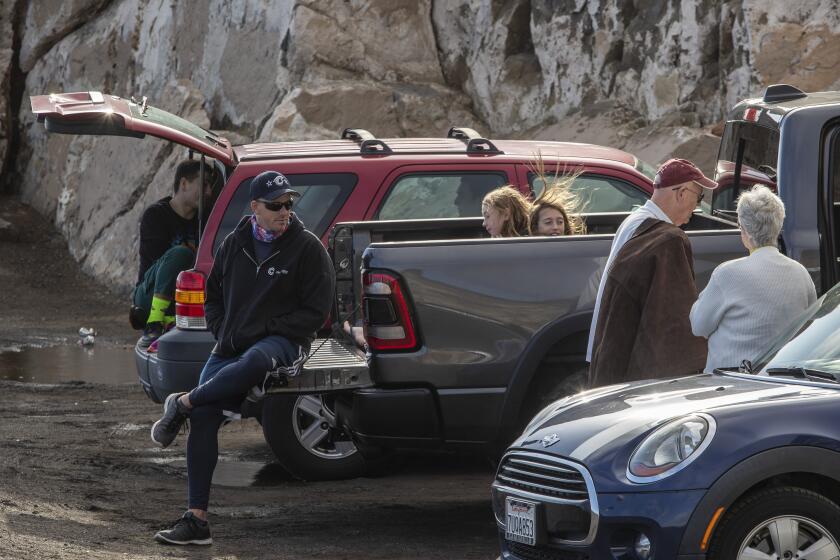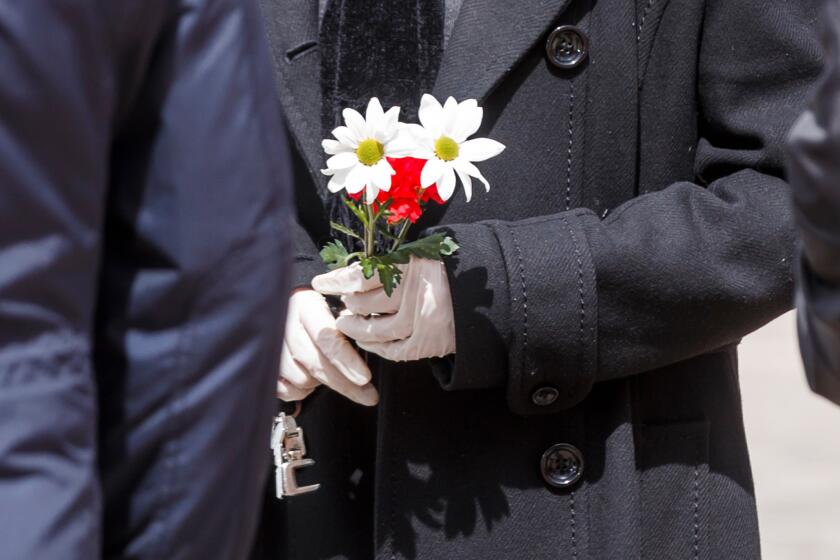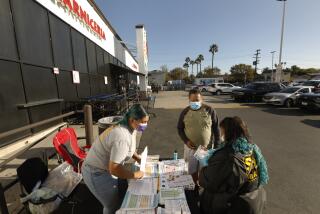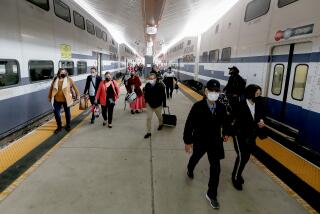66 more coronavirus-related deaths reported in L.A. County as case count climbs past 16,000
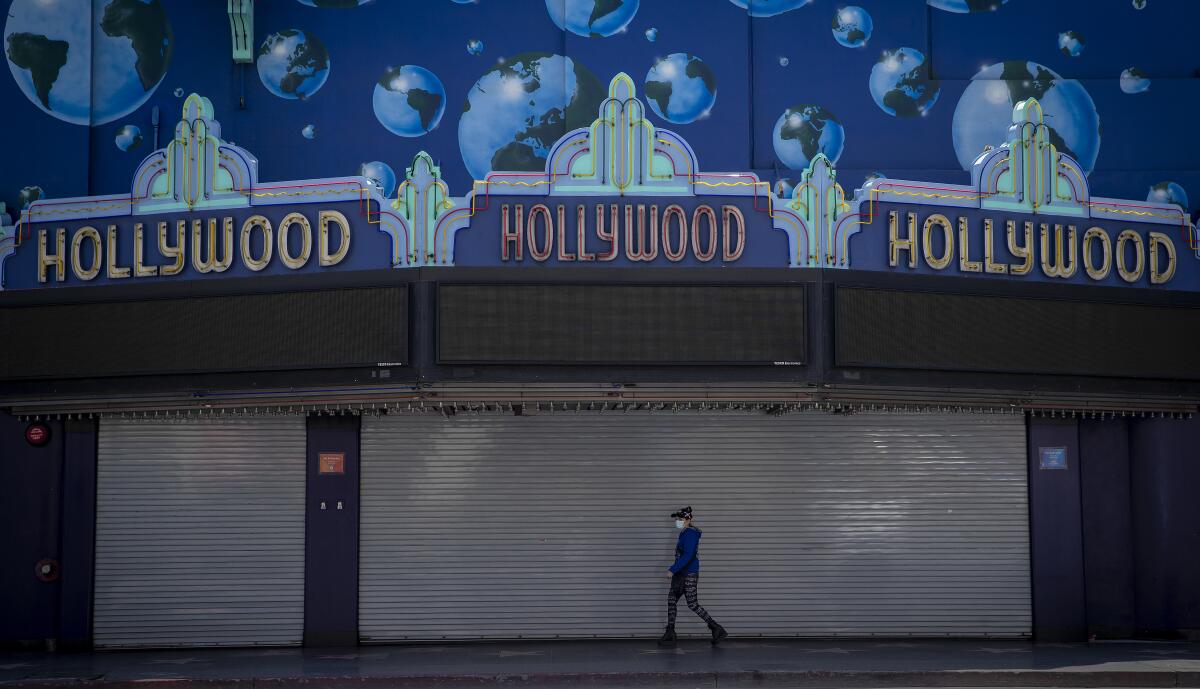
Los Angeles County health officials announced an additional 66 coronavirus-linked deaths Wednesday, bringing the total number to 729 since the outbreak began.
Barbara Ferrer, the county’s public health director, also confirmed 1,318 new COVID-19 cases — pushing the cumulative total to 16,435.
The latest victims include 48 people who were over the age of 65, 13 people who were 41 to 65 years old and two people who were anywhere from 18 to 40. Ages were not available for the other three.
Of all those who have died from coronavirus infection in the county, 88% had some kind of underlying health condition, according to Ferrer.
“This underscores the need for all of us to do the best job possible to make sure people who have serious health conditions are able to stay home and stay safe,” she said.
As of Wednesday, there were 1,791 COVID-19 patients hospitalized countywide — with 30% of them in intensive care and 19% on ventilators, according to Ferrer.
Officials this week are making a bid with Gov. Gavin Newsom to begin a slow and gradual reopening process, one they say is guided by science.
Models unveiled Wednesday project that, should residents continue to abide by stay-at-home orders and maintain social distancing when they do venture outside, the county should have enough hospital and ICU beds, as well as respirators, to accommodate the expected number of coronavirus patients, according to Dr. Christina Ghaly, director of the county Department of Health Services.
“We continue to make progress, and the spread of COVID-19 has leveled out,” she said, “but relaxing physical distancing measures very suddenly would negate and reverse all of that progress we’ve made to date.”
If physical distancing practices were completely relaxed, Ghaly said projections indicated the coronavirus infection rate for L.A. County residents would be 96% by Aug. 1. Maintaining current levels, she said, reduces that projected overall infection rate to about 11%.
Eerie photos and stunning aerial shots show what California looks like under Gov. Newsom’s “stay at home” order.
“I know it’s hard,” she said. “I know a lot of us are feeling the weight of these restrictions.… But please know that your actions have saved lives and are protecting the lives and health of those around you and those you love. This will end.”
While neighboring counties have started to pull back on some of their coronavirus-related restrictions — reopening golf courses, parks and other outdoor areas — health officials continue to urge L.A. County residents to abstain from traveling.
Travelers risk carrying the coronavirus across county boundaries, Ferrer added.
“They want to try and reopen just for their own residents,” she said. “Nobody benefits from people doing a lot of travel now and going and congregating in any spaces or places.”
California has recorded more than 37,000 cases, according to the Los Angeles Times’ daily tracker. Part of the uptick in new cases this week is the result of a lag in labs reporting test results and releasing bulk numbers.
More than 1,400 people have died across the state.
In our effort to cover this pandemic as thoroughly as possible, we’d like to hear from the loved ones of people who have died from the coronavirus.
Gov. Gavin Newsom and others have said that California and the nation have not necessarily seen the worst of coronavirus and that lifting stay-at-home rules could be disastrous.
“We remain committed with our health partners to safely ease restrictions so people can return to work and reunite with loved ones,” said Kathryn Barger, chairwoman of the L.A. County Board of Supervisors. “Keep in mind, science and data will guide our decision.”
Newsom on Wednesday reemphasized that there were six key indicators for potentially modifying the stay-at-home order. Among those is increasing testing capacity, which he said “may be among the most important.”
Currently, the state can provide about 16,000 tests a day, he said, and the goal is to boost that to 25,000 a day by the end of the month.
To that end, he announced that the state was bringing 86 new testing sites online, which will be placed in more rural reaches of the state and areas where they can serve “black and brown” communities.
“These sites will provide the kind of continuity that we need to ultimately advance our collective goals in this state to reach these testing goals,” he said, adding that their strategic deployment will “make sure we are truly culturally competent in our testing.”
Newsom also announced that California hospitals could resume providing scheduled surgeries — which reflects current confidence in the capacity of the statewide system. He emphasized, however, that “we will be very thoughtful and judicious about how we do that. We will not overload the system.”
“We recognize that anytime we begin to toggle back and start opening things back up we have to look every day at the data ... to make sure that we are adjusting to these new decisions and maintaining an understanding that we need to be vigilant about the intended consequences of these decisions and the unintended consequences of these decisions,” he said.
More to Read
Sign up for Essential California
The most important California stories and recommendations in your inbox every morning.
You may occasionally receive promotional content from the Los Angeles Times.
